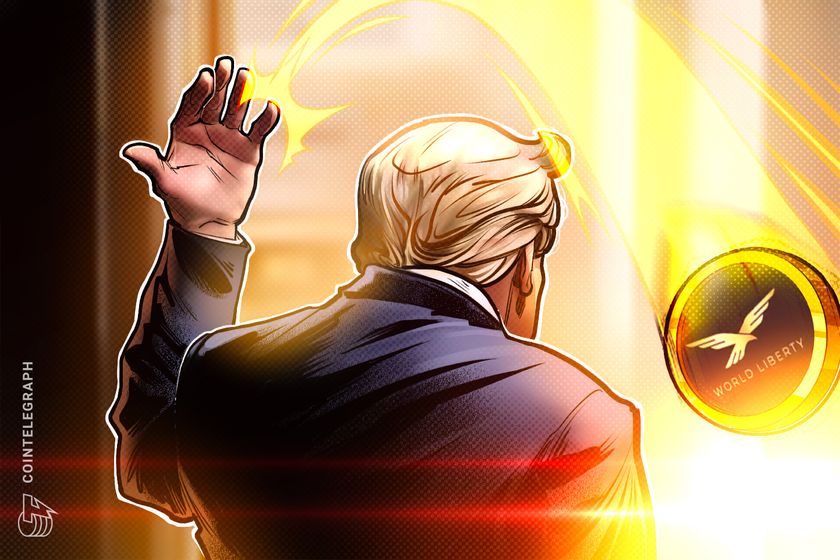Trump’s WLFI Crypto Investments: A High-Stakes Gamble Falling Short

Introduction
World Liberty Financial (WLFI), the crypto venture tied to former President Donald Trump and his family, entered the market with a bang in late 2024. Promising innovation and financial freedom, the project quickly became a focal point of controversy—accused of front-running policy events and blurring ethical lines. But as the Trump administration approaches its 100-day mark, WLFI’s financial performance tells a different story: steep losses, questionable trades, and mounting scrutiny. Is this a case of bad timing, or something more concerning?
Founding and Ownership: A Family Affair
WLFI launched on September 16, 2024, with Trump himself announcing the project on X (formerly Twitter). The venture was spearheaded by real estate mogul Steve Witkoff and his son Zach, alongside crypto investor Chase Herro and social media influencer Zak Folkman. The Trump family’s involvement was immediate and conspicuous: Donald Trump was named “chief crypto advocate,” while his sons Eric, Donald Jr., and Barron took roles as “Web3 ambassadors.”
The project’s “gold paper” leaned heavily into Trump’s branding, featuring imagery of the former president and touting WLFI as a bridge between traditional finance and decentralized innovation. But behind the glossy marketing, questions lingered about conflicts of interest—especially as Trump’s political allies pushed crypto-friendly legislation.
Token Sales: $550 Million Raised, But Where’s the Value?
WLFI’s first token sale in October 2024 netted $300 million, selling 20 billion $WLFI tokens at $0.015 each. A second sale in January 2025—coinciding with Trump’s inauguration—priced tokens at $0.05, a 230% increase. Despite the hype, the tokens remain illiquid, locked behind accreditation walls and unavailable on exchanges.
- 35% of tokens allocated to sales
- 32.5% for community incentives
- 30% for “initial supporters”
- 2.5% reserved for the team
While the $550 million haul seemed impressive, critics noted the lack of transparency around fund deployment. Meanwhile, WLFI’s trading activity raised eyebrows—particularly its timing around market-moving events.
Portfolio Performance: Winners and Losers
WLFI’s $103 million portfolio is a mixed bag. The bulk of holdings are in stablecoins like USDC, but its altcoin bets have been volatile:
Top Performers:
- Wrapped Bitcoin (WBTC): Strategic accumulations via Coinbase Prime.
- Sei (SEI): $6 million invested across three purchases.
- Avalanche (AVAX): Single $5 million buy-in March.
Biggest Losses:
- Movement (MOVE): Down 50%, losing $2.1 million.
- Mantle (MNT) and Ondo (ONDO): Double-digit declines.
- Ether (ETH): Massive deposits to Coinbase Prime coincided with Eric Trump’s promotional tweets.
On average, WLFI’s non-stablecoin holdings are underwater by $4.28 million—a stark contrast to its fundraising success.
Ethical Concerns: Policy Influence and “Pump-and-Dump” Allegations
The project’s most glaring issue is its intersection with political power. In March 2025, senators flagged WLFI’s stablecoin, USD1, as a potential conflict of interest. Trump’s administration has since softened crypto enforcement while allies draft favorable regulations—raising concerns about self-dealing.
Timing has also been suspicious. When Trump announced global tariffs on “Liberation Day,” markets tanked—only for him to post “THIS IS A GREAT TIME TO BUY!!” on Truth Social. WLFI’s subsequent ETH moves mirrored this rhetoric, fueling insider trading accusations.
Conclusion: A Cautionary Tale for Crypto-Political Entanglements
WLFI’s struggles underscore the risks of mixing crypto ventures with political influence. Despite a $25 million lifeline from DWF Labs in April, the project’s losses and ethical clouds suggest a rocky road ahead. For investors, the takeaway is clear: in an unregulated arena where leaders can shape their own markets, due diligence isn’t just wise—it’s essential.
Key Takeaways:
- WLFI’s token sales succeeded, but its trades are bleeding value.
- Trump family involvement invites scrutiny over market manipulation.
- Crypto projects tied to political figures demand extreme caution.
As regulatory eyes turn toward WLFI, its next moves could set precedents—for better or worse—in the evolving crypto-political landscape.

